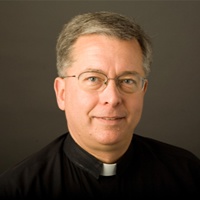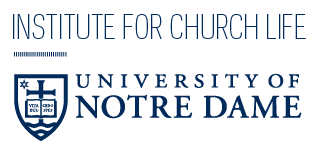Lent comes from the same old English root as lengthen – it’s a reference to the lengthening of the daylight hours in the Northern Hemisphere’s spring. In other words, Lent is the church’s springtime, a time of increasing light helping us to see more clearly, a season of new life and renewal, a time to renew our love. This is why the old missal could pray, “Each year you (God) give us this joyful season...” Lent has an urgent message, and demands a drop-everything response. But it is sustained by the joy of what Christ has done and is doing, the love into which we are invited, witnessed in Christ’s Passion and Resurrection. So it is less about the sadness and hard work of repentance than it is about God’s mercy and unmerited goodness toward us. If we turn Lent into a season that focuses on our sinfulness and our penitential practices, we will feed another sorry round of self-centeredness in ourselves, and miss God’s effort to pull us out of precisely that narrow preoccupation with self, with our plans, with our need for control. Lent’s program of prayer, fasting and almsgiving or service is meant to help lift our minds, hearts and wills toward the amazing things God is doing. Discipleship is meant to be a freeing, joyous way of life. We preach joy, even in Lent.
Historically Lent began as a season of final preparation for the catechumens moving toward baptism at Easter, a kind of spiritual retreat designed to heighten the senses to take in the beauty, mystery and power of the Three Days: Holy Thursday, Good Friday, and Easter. The rest of the church, of course, joins in this 40-day journey through the desert, for none of us ever outgrows the need for repentance, the capacity for plunging deeper into the Paschal Mystery. We accompany those elected for the sacraments of initiation, and they become icons for us of the walk of trust in God upon which we’ve all set our feet. In Lent, we preach a mystagogy of the journey to initiation, a plunging into God’s new life for us.
So we are all moving toward the water – the water of the Easter baptismal font, in which we will wash the elect into our company of new life, and in which we ourselves will wash and recommit our lives. Preachers will do well to attend to the theme of water that threads its way through the lenten readings, becoming a mighty torrent of Exodus deliverance at the Easter Vigil. Each of the ritual signposts along the journey of the soon-to-be-baptized – the Rite of Sending, the Rite of Election, the scrutinies – affords the community rich opportunities for reflection on the full dimensions of meaning that await in the Cross and Resurrection. Our task is to point and lead, to unfold and spread the banquet table, to rout the fear that could hold us back. This is what the human heart hungers and thirsts most deeply for.
The Lenten Sunday lectionary is dominated by five of our most important texts.
- Jesus himself goes to the desert, not so much a place of harshness as a place of unique clarity, bright sun casting temptation into sharp relief. We follow him there to purify our trust in God alone.
- The Transfiguration directs our attention to the unique identity of Jesus, inviting us to put our trust in him no matter where the road leads. We are given a glimpse of glory to come, a promise of our own future joined to his.
- The Samaritan woman at the well – a gathering around water, but the real thirst-slaking flows from Jesus himself.
- The man born blind. Jesus will help us to see, really see.
- The raising of Lazarus. The power calling the dead back to life is beginning to rumble, move, and reach out to us.
All of these are moving inexorably to the story of the Passion, which we hear on Palm/Passion Sunday but plunge into fully on Good Friday. What wondrous love is this. But, even then, death does not have the last word.
To preach in Lent is to preach in the noonday sun, illuminating, invigorating. It is to give voice to the urgency of the hour, the foolishness of misplaced trust, the oppressions that beset us – and to the challenge of single-hearted devotion. It is to draw us nearer to the paradox at the heart of our lives, the Crucified One raised for and in us. We get on our knees – not before our sin, but before the God of Mercy upon whom we utterly depend.
The God of Mercy. Pope Francis has designated this a special Jubilee Year of Mercy. He directs our attention not only to the heart of Lent, but to the very heart of God. We can help our people understand and feel what this singular quality of God is. They may be under the mistaken impression that mercy is only about God’s forgiveness of sin, the cancellation of debts we cannot pay. Biblical mercy – the mercy demonstrated in the lenten readings – includes that, of course, but so much more. Its breadth and depth are better captured by the classical “works of mercy,” which could stand a review and revival for all of us:
The Corporal Works of Mercy
- Feed the hungry
- Give drink to the thirsty
- Clothe the nakek
- Shelter the homeless
- Visit the sick
- Visit the imprisoned
- Bury the dead
The Spiritual Works of Mercy
- Admonish the sinner
- Instruct the ignorant
- Counsel the doubtful
- Comfort the sorrowful
- Bear wrongs patiently
- Forgive all injuries
- Pray for the living and the dead
More than the remission of sin, more than a kindly, compassionate disposition – this is a way of life that mirrors God’s compassionate heart, God’s transformative power now loosed in us. We want to be changed into fonts of God’s proactive mercy. Set us on fire with that, preachers of the Word.
Now that would be a truly joyful Lent.

Editorial note: This article appears through a partnership between the Notre Dame Center for Liturgy and the Marten Program in Homiletics and Liturgics, University of Notre Dame.
Featured Image: The Works of Mercy by Master of Alkmaal made for the Church of Saint Lawrence in Alkmaar, Netherlands (Circa 1504).



